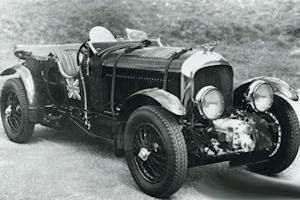The great Walter Owen Bentley of Bentley Motors rather disapproved of his most famous car, the 268ci (4,398cc) “Blower” Bentley. In the great tradition of steam (Bentley served his apprenticeship at the Great Northern Railway’s Doncaster works), he preferred to gain power by increasing engine capacity. “WO” had every right to be concerned, because, as he said, the Blower Bentley “proved endlessly unreliable, bringing the Bentley marque into disrepute.”

Bentley 4,5 liter Blower 1929
- YEAR REVEALED 1929
- PLACE OF ORIGIN Cricklewood, London, UK
- HISTORICAL STATUS production car
- ENGINE four-cylinder, 268ci (4,398cc)
- MAXIMUM POWER 175bhp
- LAYOUT front-mounted engine driving the rear wheels
- BODYWORK two-seater roadster
- TOP SPEED 105mph (169kph)
- NUMBER BUILT 55
Even today, some enthusiasts question the reliability and efficiency of the enormous supercharger. The idea of a Roots-type supercharger and a single SU carburetor mounted outside the bodywork came from engineering genius Amherst Villiers. Meanwhile, well-connected “Bentley Boy” Tim Birkin raised the capital to sponsor it from wealthy horse-racing patron, the Hon. Dorothy Paget. Birkin’s electrifying drive at Le Mans, in 1930, pushed the rival Mercedes team to breaking point, but at the cost of his own car.
He handed victory to the unblown factory Bentley “Speed Six.” The Blower’s greatest hour came in the 1930 French Grand Prix, however, where it finished an amazing second-averaging over 90mph (145kph)-and very nearly won. “The Bentley was like a large Sealyham among greyhounds,” Birkin recalled in his autobiography. But the glory was shortlived. Paget withdrew her backing, Rolls-Royce absorbed Bentley, and Birkin was forced to change his allegiance to Italian machines.